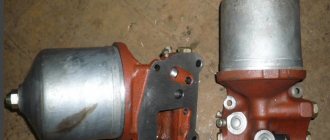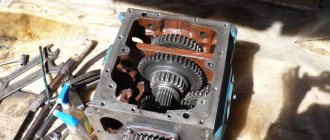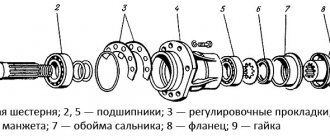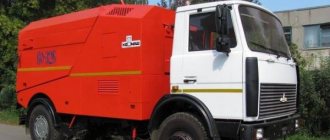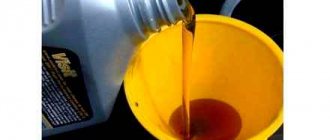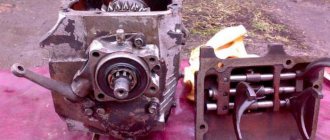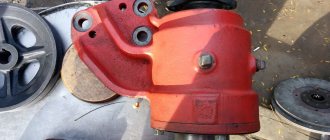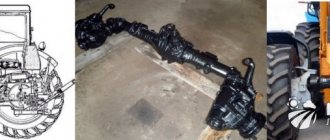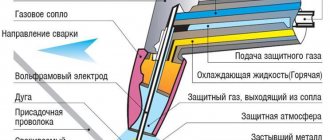With the onset of spring, vegetation appears on summer cottages and in the backyards of private houses, which must be dealt with. If this is ornamental vegetation, then it needs to be mowed with a lawn mower, and gas mowers and trimmers are used to mow down weeds and large thickets. These are prototypes of hand scythes, the use of which requires some skill. Not many experts know how to mow correctly with a lawn mower according to the instructions. If you are asking yourself this question, then it’s time to understand the rules of mowing.
How to start the device?
How to start the engine correctly is written in detail in the operating instructions for the selected lawn mower model, so starting the engine in a fully functional machine does not cause any difficulties .
If following all the recommendations does not lead to starting, then either the motor or some additional equipment is faulty or incorrectly configured, so the mower needs maintenance or repair.
You will find more detailed information on mower malfunctions, as well as how to repair them, in this article (Gasoline lawn mower malfunctions).
If there are no operating instructions for the device, then you need to proceed as written below.
First you need to carefully inspect the mower to find all the controls related to the engine, that is :
- on/off button or toggle switch;
- recoil starter handle;
- electric starter button;
- accelerator handle;
- fuel pumping button;
- throttle control lever.
Inexpensive models of lawn mowers, costing less than twenty-five thousand rubles, most often have almost all of these elements with the exception of the electric start button, but there are models without most of these elements or with an electric start button.
The most expensive models usually have only a toggle switch to turn the engine on and off, as well as a manual starter handle; all other elements operate automatically and do not require operator intervention.
Then perform the following sequence of actions (if some elements are missing, it means they work in automatic mode or you could not find them):
- check the oil level and the presence of gasoline;
- turn on the toggle switch to turn the engine on and off;
- pump up fuel using the appropriate button;
- move the throttle control lever to the start mode or the “Off” position;
- Pull the recoil starter cable until noticeable resistance appears;
- smoothly, but firmly and quickly pull the recoil starter cable towards you;
- if the engine does not start, then repeat the last 2 operations 2-3 times;
- If the engine still does not start, then you need to either find the missing controls or diagnose it to find and fix the problem.
The only difference in starting devices with an electric starter is that instead of using a manual starter cable, you press the electric starter button and hold it pressed for 1-2 seconds.
The main purpose of the trimmer
A grass trimmer is a tool that allows you to cut green grass with a soft stem or dry dead wood. If the lawn mower moves along the surface of the ground, then in this case the trimmer is fixed to the operator due to the presence of special belts.
It is worth noting that the device is universal. Many people even believe that electric braids are trimmers, but this is not true.
The trimmer performs the following actions sequentially:
- Through his actions, the operator will attach the tool with special belts and start the motor. The startup method will depend on what kind of drive the device has. It can be electric or petrol type. The first option starts when you press a button, but the gasoline option starts when you use a manual starter;
- torque from the engine will be transmitted to the spindle or shaft area. These are the same working parts to which the head with fishing line and the cutting steel circle are attached;
- transmission of torque from the motor to the working element will be carried out due to a flexible or rigid shaft;
- Rotation of a drum with a fishing line or a disk equipped with knives will allow you to cut the grass or cut it off.
The main structural elements in the device are presented:
- drive mechanism, i.e. engine, which can be either gasoline or electric;
- a rigid base in the form of a rod that connects the engine and the working body;
- handle; in the trimmer design, it is customary to use 2 handles, one part of which is the location for the accelerator;
- a rigid shaft, which makes it possible to transmit torque from the engine to the executive body;
- the protection casing is not only necessary for processing the protection of the operator’s feet, but also for neatly mowing vegetation;
- fastening of belts, which make it possible to ensure reliable fixation of the device on the operator’s shoulders.
When dealing with the question of how to choose a grass trimmer, it is worth noting that gasoline-powered devices are equipped with an additional fuel tank, while the electric type operates exclusively with network support. Therefore, instead of a tank, a power cord is presented in the second case.
How to use?
The main purpose of lawn mowers is to mow young short grass on lawns and relatively flat clearings, but sometimes you have to mow tall grass or weeds, as well as mow lawns on slopes.
Even when mowing young grass, it is necessary to follow the correct sequence of actions; this will extend the life of the lawn mower parts and reduce the physical strain on the operator.
All actions performed during mowing can be divided into:
- preparation for mowing;
- selection of operating mode;
- straight motion;
- turns;
- stop;
- emptying the grass catcher;
- end of work;
- lawn mower maintenance.
Preparing for mowing
This operation is especially important after a long break or when the lawn mower has been running heavily for a long time.
Preparation for mowing includes:
- visually inspect the mower for visible defects, including loose bolts or nuts;
- checking the engine oil level and then adding or replacing it;
- checking the condition of the belt, gearbox and knife, followed by maintenance, that is, replacement, repair, sharpening or lubrication, if necessary;
- checking the condition of all controls and lubrication/maintenance if necessary;
- checking the gasoline level and topping it up if necessary;
- adjustment of the folding handle to the height of the operator.
All these procedures are described in detail in the instruction manual, so you must read this document carefully and always keep it at hand in case of any emergency situations.
In addition, on mowers whose wheels are bolted to the frame, it is necessary to ensure that the wheels are securely fixed , as well as their free rotation, and, if necessary, secure them or lubricate them.
Operating mode selection
After preparing for mowing and delivering the lawn mower to the work site, you need to select the appropriate mode, that is, adjust the mowing height and activate the method of processing and disposing of the cut grass that is necessary in this situation.
On most models, the cutting height is adjusted centrally , so it is enough to move the corresponding lever to the required position, but on some mowers the adjustment is carried out on each wheel individually.
This increases the time spent on the procedure, but allows you to set the knife at a certain angle, which is useful when working in areas with difficult terrain.
The choice of each method for processing and disposing of cut grass is described in detail in the operating instructions, so you must read this document carefully , because the choice of one or another method depends on the design of the mower and is not always applicable even to devices from the same manufacturer.
Straight-line movement
The straight-line movement of non-self-propelled vehicles does not cause any particular difficulties, because the operator pushes them at the speed that is most comfortable for him. The situation is different with self-propelled mowers, since their movement speed depends on the rotation speed of the engine crankshaft and the transmission gear ratio.
On mowers with one gear, the speed of movement is adjusted by changing the speed of rotation of the engine shaft, however, for high-quality mowing of grass, the crankshaft revolutions should not drop below 2.5–2.8 thousand per minute, which is only slightly less than the maximum rotation speed.
If the shaft rotates more slowly, the knife will not be able to cut the grass effectively and evenly . Therefore, on mowers with a variator or multi-speed hydrostatic transmission, first set the gear necessary to obtain the optimal speed and only then begin to move forward.
On any self-propelled lawn mower, to start moving forward, press the corresponding bracket on the folding handle.
Turns
The mower cannot turn on its own, so turning always occurs due to the physical impact of the operator.
In areas with short grass and a large (5 or more meters) turning radius, it is enough to gradually turn the handle in the opposite direction at each step .
However, in areas with long grass or if you need to turn (turn around) in a small space, you must first press the handle to lift the front wheels and only then turn the device to the desired angle.
If you do not lift the front wheels, you will have to strain very hard, because they create noticeable resistance to lateral movement.
In addition, on self-propelled mowers, before starting the maneuver, you must release the drive bracket so that the drive wheels are not connected to the engine while turning. If you do not do this and turn while driving, the load on the transmission will sharply increase and its service life will be reduced.
Stop
If you need to stop briefly (for a few seconds, for example, to wipe sweat from your forehead), then it is enough to stop pushing the non-self-propelled vehicle forward or release the corresponding bracket of the self-propelled vehicle.
However, if the stop is for 20 seconds or more, then you need to release the blade connection bracket and use the accelerator to reduce the engine shaft rotation speed to idle (900–1300 rpm, depending on the characteristics of the engine).
This will reduce fuel consumption and increase engine life. If the stop is for a minute or more, then it is also advisable to turn off the engine so that it does not waste its resource.
Emptying the grass catcher
Some models of mowers are equipped with a grass receiver, that is, a container into which all the mown and shredded grass is collected.
Most grass receivers have a fill indicator - a small window covered with transparent glass, through which you can see how full it is.
When the grass receiver is filled but not emptied, the efficiency of mowing drops sharply, because the mown grass clogs the deck , which is why an upward air flow no longer forms in it, lifting blades of grass from the ground.
Further mowing without emptying the grass catcher leads to a sharp increase in load on the engine and a decrease in its service life.
To empty the grass receptacle, stop the mower and turn off the blade drive (if this is provided by the design), and also reduce the engine speed or turn it off (depending on the distance to the place where the cut grass is stored).
Then disconnect the clamps and disconnect the grass catcher from the mower body (this step is described in detail in the operating instructions for the device), after which the container is emptied and installed on the lawn mower, performing all these steps in the reverse order.
End of work
Having finished mowing the grass, the mower is taken to the cleaning site, where, after turning off the engine, a hose is attached to the deck and water is supplied to wash all the cut grass out of it. For this, the pressure created by ordinary household submersible pumps of the “Rucheek” type is sufficient.
Then, when the engine has cooled down, the outside of the housing is washed with a stream of water . If it is not possible to wait until the motor cools down, then you can sweep the outside of the device with a soft broom or blow it with a stream of air using a blower or a vacuum cleaner.
Mower maintenance
After finishing mowing and cleaning the device from grass residues, the lawn mower must be serviced, that is, check :
- condition of knives;
- fastening and ease of rotation of wheels;
- tightening all bolted connections;
- smooth operation of all control knobs;
- condition of the paintwork coating (LPC) of the body.
If any defect is discovered, you must either immediately eliminate it or write down a list of faults somewhere so that you can repair the device in your free time and have time to do it before starting a new mowing.
If defects are found on the paintwork of the body (most often these are various scratches), then it is advisable to immediately either paint over them with paint compatible with paintwork, or treat them with silicone spray , which will protect the paint and metal from further destruction.
Caring for a mowed lawn
The question arises: what to do with the mowed grass - leave it on the lawn or remove it? On the one hand, cut plants can serve as an excellent fertilizer for the lawn; the nutrients from them will return back to the soil, the spread of moss will stop, and you won’t have to waste time removing grass from the lawn.
However, there is also the other side of the coin: mown grass will lead to the rapid appearance of weeds, the proliferation of earthworms, the surface of the lawn will acquire a porous structure and will be more susceptible to disease, and soil aeration will worsen. Thus, it is better to remove the cut grass after cutting; it is recommended to leave it only in dry weather, so that the necessary moisture evaporates less from the lawn.
Lawn mowing should be regular, then the plants will take a dwarf shape
As for watering and fertilizing, they are necessary to form a thick, high-quality cover, even if you have to mow the lawn more often due to the rapid growth of grass. It’s better to mow the grass more often and end up with a beautiful green surface without bald spots.
Lawn mowing should be regular, then the plants will take on a dwarf shape and, instead of increasing leaf mass, will form more and more new shoots, creating dense turf. If you cut it rarely and immediately short, the grass will weaken and begin to fall out, and in its place separate islands will form, overgrown with weeds, yarrow, moss or bluegrass.
Arranging green lawns at dachas and country estates is becoming a popular activity. At first glance, it seems that everything in this matter is simple: you have allocated a place for a green lawn, sowed the area with grass seeds and wait for the field to turn into a green lawn. And only later does an understanding of the need for proper care come, and this, first of all, lies in the skillful operation of the lawn mower. It turns out that mowing the lawn is not just for beauty.
Typically, lawns are seeded with grasses from the grass family, and mowing prevents them from flowering and fruiting. This simple technique prolongs the growing season of plants, promotes good rooting, growth of lateral green shoots and tillering. Regular mowing helps compact the turf
, and densely growing “cultivated” grass prevents the growth and spread of weeds. Throughout the entire warm period, timely mowing preserves the green color of the lawn.
There is no certainty regarding the frequency of mowing the lawn. This parameter depends on several objective factors:
- type of sown vegetation;
- type of soil and fertilizing;
- weather;
- seasonal characteristics of plant growth;
- purpose of the lawn.
The first lawn mowing activities begin in the spring, after the grass on the planned sown lawn has risen to a height of 12–14 cm. It is recommended to mow an overwintered lawn when the greenery rises to 7-10 cm. Depending on the intended purpose of the green covering, the grass is mowed to a level of 4-7 cm. Subsequent mowing is recommended each time the grass has risen to a height of 2-3 cm above the desired level .
How to wash a gasoline lawn mower?
For washing, the lawn mower is delivered to the site, where not only there is access to water under low pressure (0.5–3 bar), but there is also provision for drainage of water with the remains of cut grass. The hose is connected to the fitting on the deck and water is supplied, after which it independently washes away all the remaining grass and cleans the deck from the inside.
If the mower is not equipped with such a fitting, then it must be tilted on its side at an angle of 50–60 degrees and fixed in this position, after which the deck should be thoroughly cleaned with a stream of water.
After each mowing, it is necessary to wash not only the body, but also the engine cooling fins , for which they use a sprayer to avoid strong water pressure, because water arriving under high pressure and in one stream can penetrate the ignition system.
Therefore, it is better not to wash the engine of a mower with electronic ignition , but to clean it with a stream of air and sticks made of soft plastic or wood.
After each washing or blowing, you must carefully inspect the exhaust pipe and the suction hole of the air filter. If there are grass residues in them, they are carefully removed.
Bit theory
Before you solve the problem of choosing a lawn mower for working on the lawn, you should know that the lawn mower engine has two types:
- Synchronous
. This is a motor in which the rotor and magnetic field rotate at the same speed. Synchronously. Even if the rotor receives a heavy load during operation, its speed does not decrease. The engine continues to run at constant speed. Use sliding contacts to achieve this result. Consequently, a synchronous motor is more complex in design and therefore more expensive. - Asynchronous.
A motor whose rotation speed does not match the speed of the magnetic field. The stator and rotor are separated by an air gap, without slip rings. It is simple in its structure, which means it is not that difficult or expensive to do synchronously.
It is impossible to answer which lawn mower engine is better. Both types of engines have their advantages and disadvantages.
For those who do not want to delve into the wisdom of electromechanics, we explain it very simply. Each motor has two key elements: a stator (stationary, with windings) and a rotor (movable). Current from the network is supplied to the stator. A rotating magnetic field appears in its winding. Thanks to it, the rotor also begins to rotate. And the rotation speed of the rotor is transmitted to the shaft of the device.
In our case, on a vertical shaft on which the cutting blade of the lawn mower is mounted. It turns out that the operation of the knife directly depends on the engine speed. Stable speed. The knife also rotates consistently and powerfully. Low rotor speed. The knife also begins to weaken and pulls up the grass. He simply does not have the strength to quickly and efficiently cut off vegetation. If we very briefly define which lawn mower is better, we will say this:
But all this is a little exaggerated, and in no way means that an asynchronous motor is worse. The asynchronous motor is the simplest and cheapest of all previously invented. Does not require complicated maintenance, does not heat up much, and has no rubbing contacts. Yes, and its reliability is within normal limits if the manufacturer is of high quality and has installed protective systems.
Is it possible to mow wet grass?
Despite the fact that mowing wet grass does not pose a direct threat to the machine parts, it is not advisable to mow it , because wet grass is noticeably heavier, which means that the air flow created by the knife will not be able to lift it as effectively as dry vegetation.
If you urgently need to mow wet grass without waiting for it to dry, then this must be done in several passes , lowering the mowing height as gradually as possible, which will increase the mowing time, but will ensure much higher quality.
When to cut: best time to trim
Landscape design specialists recommend cutting the lawn in the evening or morning in dry weather. Since wet grass gets stuck, it is difficult to cut and can lead to damage to the lawn mower.
The lawn needs to be mowed in dry weather Source pagesjaunes.ca
The degree of dryness of the soil also matters. The ideal option is slightly moist soil. If the soil is overdried, the grass will be pulled out during processing rather than neatly cut. Soil that is too wet and saturated with moisture will make it difficult for the lawn mower to operate and may damage the lawn itself.
During the period of active plant growth, it is recommended to cut them 1-2 times a week. With the arrival of cool days, this period varies from once a week to once every half month.
Storage
Lawn mowers must be stored in dry, well-ventilated areas. For short-term storage, no preparatory actions are required; just roll the device into the place intended for it and fold the handle.
If the storage period exceeds a couple of months, then the device must be prepared, for which the following steps are performed :
- drain gasoline and oil;
- dry the body;
- preserve rods and bearings;
- check and sharpen the knife if necessary.
Draining gasoline and oil
This operation is necessary for two reasons:
- During long-term storage, fuels and lubricants lose some of their characteristics, so starting the engine after a long period of inactivity with gasoline or oil remaining after use for the current year can cause serious damage to the engine and reduce its service life.
- If during storage the device has to be turned over or placed vertically, fuel and lubricants may leak out, after which they will stain the floor and body of the mower, fill the room with a heavy oily smell and create a fire hazard.
The method for draining these fluids depends on the design of the mower and is described in detail in the owner's manual.
If there is no manual, then the mower should be placed on the table (draining fuel and lubricants in this way is carried out only after the engine has cooled), tilted to its side at an angle of 45 degrees and
carefully inspect the engine and fuel tank from below in search of drain holes .
If they are not there, then you need to first unscrew the fuel tank cap and turn the mower upside down to drain the gasoline, then tighten the fuel tank cap.
Before draining the oil, it is necessary, without turning on the ignition, to pull the manual starter 5–10 times, thanks to this the oil pump will supply lubricant to all rubbing parts of the engine, as a result they will be protected from moisture until spring. Then you need to unscrew the oil filler cap and turn the device over again, waiting for the liquids to completely drain out, and then return the cap to its place.
Some models of mowers are equipped with engines , of which manufacturers claim that the engines do not require an oil change, but only topping it up. This is not a very honest statement, because the engine can run on old oil, which is constantly topped up with new oil, but only for a limited time, for example, 500 or 1000 hours.
This engine resource is just enough for the entire warranty period declared by the manufacturer (usually 2–5 years), after which there is a high probability of engine failure, whereas with an oil change the engine can operate for 10–20 years without repair.
Therefore, whether to drain the oil in mowers with such an engine before winter or not, everyone will have to decide individually.
If high-quality oil is poured into the engine, corresponding to it according to SAE and other parameters, then you can not only drain the old oil, but also fill in new one, however, this procedure must be carried out on a hot engine , so it is applicable only where there is a special hole for this.
Then, wash the oil filter in diesel fuel or gasoline (if it is installed on the model and it can be washed) and fill in new oil, after which, without turning on the ignition, pull the recoil starter cable 5–10 times to lubricate all the rubbing parts of the engine with new oil.
Drying the body
Proper maintenance involves washing the body after each use, which is why there is a high probability that droplets of water remaining on the body will freeze in winter and damage the paintwork or rubbing parts .
Therefore, before leaving the mower for long-term (winter) storage, it is necessary to thoroughly blow out the body from all sides using a blower, paying special attention to the junction of the wheel axles and bushings that act as bearings.
If the wheel axles are mounted on bearings, then it is necessary to thoroughly blow off the bearings from all accessible directions in order to remove even the smallest particles of moisture from them.
Preservation of rods and bearings
It is necessary to treat the inner surface of all cable drives (rods) with WD-40 liquid to remove water from them, and then use a syringe to pour 0.2–0.5 cm3 of engine oil into them.
If you do not do this, then after 3-5 years there is a high probability that the cables will begin to jam, which will lead to the inability to reduce engine speed in time and other problems.
Some models of mowers provide lubrication of bearings, including sliding bearings (shaft-bushing) through special grease fittings. Before winter, such bearings must be filled with lubricant recommended by the manufacturer , using a syringe for servicing (syringing) the chassis of old cars.
Checking and sharpening the knife
The sharper the knife, the less load on the engine, which means the longer its service life. The most important condition when sharpening a knife is maintaining balance, because if one side is heavier than the other, even by half a gram, this will lead to strong beating, which negatively affects the life of the crankshaft bearings.
To check the alignment, the removed knife can be placed on a 1–2 mm thick plate fixed vertically in a vice; if the balance is maintained, then balance will be achieved when the plate is exactly in the middle of the knife.
If it is shifted to the side, then when sharpening more metal is removed from this side, constantly checking the balance. also take the knife to a specialized workshop that repairs and maintains gasoline lawn mowers for sharpening, or install a new one instead.
In any case, before installing a sharpened or new knife, it is advisable to check its balancing, because this is many times simpler and cheaper than replacing bearings and the engine crankshaft, broken due to an unbalanced knife.
Types and design of trimmers
Depending on the source of energy for the engine, trimmers are divided into gasoline and electric. The first type is equipped with a tank for fuel and lubricant, the second is powered by electricity or a battery.
Gasoline trimmer design
All elements of the device are mounted on a long metal rod. At its upper end there is a gasoline tank, an internal combustion engine and a starter for starting it. At the lower end there is a spindle that rotates counterclockwise. A reel of fishing line or sharp knives (discs with teeth) made of steel or plastic are mounted on it. Inside the rod, which is a hollow tube, there is a rigid or flexible shaft through which rotation is transmitted from the engine to the working tool.
In the middle of the rod there is a handle-holder, which can be D-shaped or forked, similar to a bicycle handlebar. The asymmetrical folding handles (like Husqarna lawn mowers) are very convenient. The trimmer control buttons and levers are located on the handle or rod. The motor, control elements and coil/disk are connected using a flexible cable. The rods are solid, collapsible and telescopic. The length of the last two types can be changed to suit the height of a particular person. Some models have attachments for lap belts. The disk or reel (bobbin) is covered with a shield to protect the person who is mowing the grass.
The cutting tool is a reel, inside of which a fishing line (cord, string) with a diameter of 2-3 mm is wound. In some models, the fishing line is wound with a reserve, and with a light impact on a hard surface, it automatically moves out of the bobbin. In other trimmers, a piece of cord is inserted into the reel, and the excess length is cut off on the sharp edge of the casing.
In addition to the fishing line, the standard equipment of some brush cutters includes a disc with sharp serrated edges. The shape of the teeth may vary. To cut down branches and bushes, use a knife attachment or a cutter similar to a circular saw blade.
Gasoline trimmer control
There is a rotary control on the actuator that moves or closes the air damper. It is used to start the engine faster, for example, to warm it up when it is cold outside. Other regulators are located on the handle-holder or rod of the device:
- gas trigger - controls the carburetor damper to change the amount of fuel entering the drive;
- “Stop” button – designed to break the ignition circuit and stop the engine;
- a button to prevent unintentional pressing of the gas trigger - located under the stop button;
- a stopper for fixing the gas trigger - without it, when using the lawn mower for a long time, the starting lever will have to be constantly held with your finger.
Electric trimmer design
In general terms, electric trimmers are similar to gas trimmers: a motor, a handle, and a cutting element are attached to the bar.
The mains device must be plugged into an outlet, so for mowing large areas you will need an extension cord. While the operating radius of a cordless electric scythe does not depend on the length of the wire, the batteries need to be charged and changed on time.
Instead of a starter, electric trimmers use an on/off button. On them, unlike gasoline analogues, it is impossible to regulate the spindle speed, so there are significantly fewer control buttons on the device.
Safety precautions when working with a gasoline mower
Each manufacturer, in the operating instructions for its lawn mower, describes in detail how to turn it on, what can and cannot be done with this device in order to avoid injuries or breakdowns.
The basic safety rules when working with lawn mowers are the same as when using other motorized garden equipment, that is:
- Daily inspection and timely maintenance should not be neglected, as this will lead to a decrease in the service life of the parts and assemblies of the lawn mower.
- Do not operate the device or mow the grass after taking alcohol, drugs or any substances that affect reaction speed, balance and adequacy.
- Children should not be allowed to operate the mower without adult supervision.
- It is undesirable to use a machine for mowing grass whose height is more than 5 times the maximum mowing height; for such vegetation it is necessary to take either a special lawn mower or use a trimmer.
- It is not advisable to use a lawnmower in cluttered areas due to the high probability of the blade hitting a solid obstacle.
- Do not turn over or tilt the mower until the blades have stopped completely.
- Do not smoke or use open flames while servicing or refueling the device.
Preparing the area for mowing
To prepare the area for mowing, walk around the area and remove all interfering objects, that is :
- any cut or broken branches;
- boards;
- stones;
- fittings;
- wire;
- construction or household waste, including plastic and glass bottles.
Remember, any rubbish on the site can cause a breakdown or injury, because if it gets under the cutting tool, it either damages it or flies off to the side at high speed.
Pieces of brick or glass bottles can break into pieces , each of which will fly along an unpredictable trajectory, so remove all debris from the area before you start mowing.

